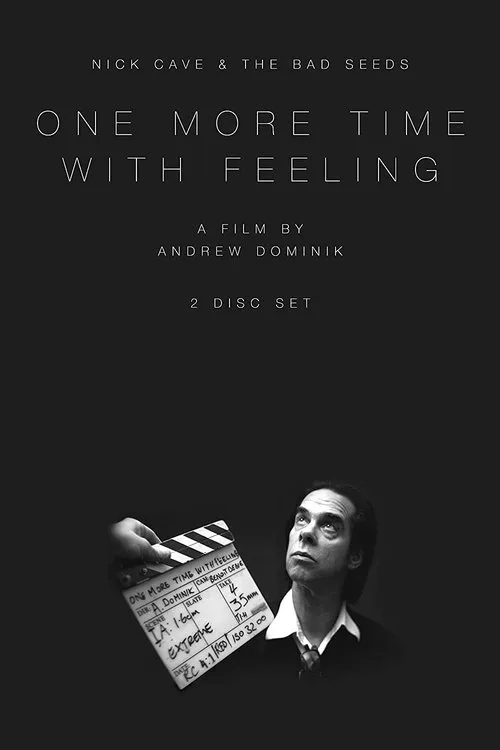Nick Cave & The Bad Seeds: One More Time with Feeling

Plot
Nick Cave & The Bad Seeds: One More Time with Feeling is a poignant and hauntingly beautiful documentary directed by Andrew Dominik, set against the backdrop of the creation of the Australian band's 16th studio album, Skeleton Tree. What begins as a performance-based concept, showcasing the iconic singer-songwriter Nick Cave and his ensemble, morphs into something profoundly different - a raw and unflinching portrayal of creative struggle and personal tragedy. Skeleton Tree, the album, was born out of a period of immense darkness for Nick Cave, marked by the sudden and devastating loss of his 15-month-old son, Arthur, in a tragic accident. This cataclysmic event would become the driving force behind the writing and recording of the album, as Cave navigates the unforgiving landscape of grief and despair. The film documents the arduous journey of the album's creation, offering an unvarnished glimpse into the band's rehearsal space and the creative process. We witness the birth of songs like "Ringside" and "Skeleton Tree", which Cave describes as a 'funereal dirge' - a fitting epitaph for his son. The raw, unflinching emotion that seeps through these performances is palpable, as if Cave is exorcising the pain of his loss through song. Through Dominik's masterful filmmaking, we are granted access to Cave's inner world, witnessing his struggle to find meaning and solace in a world that seems determined to rip him apart. We see glimpses of his introspection, his self-doubt, and his unyielding dedication to the craft, as he pours his heart and soul into the writing and performance of these haunting songs. As the band rehearses, Cave's emotional burden becomes increasingly apparent. His usually stoic demeanor cracks, revealing a depth of pain and vulnerability that few have seen before. The camera lingers on his face, capturing every nuance of his expression, every flicker of emotion, as he wrestles with the weight of his loss. Through it all, Dominik's masterful use of black and white cinematography lends an eerie, almost elegiac quality to the film. The stark, unadorned images - devoid of color or distractions - serve as a fitting reflection of Cave's emotional barrenness. The camera seems to strip the performances down to their raw, emotional essentials, leaving us with an unflinching portrait of creative desperation. One of the most striking aspects of One More Time With Feeling is its use of unconventional narrative structures. Dominik eschews traditional documentary form in favor of a more impressionistic approach, allowing the viewer to piece together the narrative through fragmented images and sound bites. This disjunctive style serves to mirror Cave's fractured psyche, fragmenting time and space in a way that echoes the disjointed nature of grief. The film's title, 'One More Time With Feeling', is a poignant reference to Cave's song of the same name - a poignant lament for his lost love, his son. This repeated phrase becomes a haunting refrain throughout the film, underscoring the cyclical nature of grief and the search for meaning in a seemingly meaningless world. Ultimately, Nick Cave & The Bad Seeds: One More Time with Feeling is a film about the power of art to transcend tragedy. Cave's music becomes a cathartic release, a way of processing the unfathomable pain of his loss. As he writes, records, and performs these songs, he is simultaneously coming to terms with his grief and creating a work of art that will endure long after the pain has faded. Through its fragile, black-and-white images and stark, unyielding performances, One More Time With Feeling offers a profound testament to the human capacity for resilience and creativity in the face of unimaginable adversity. It is a film that will leave you breathless, shaken, and perhaps, forever changed.
Reviews
Recommendations



